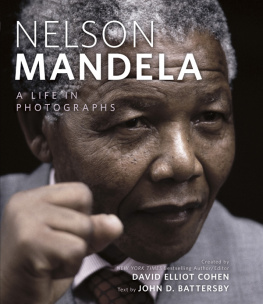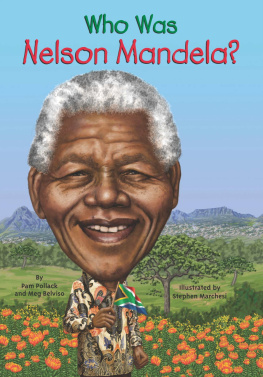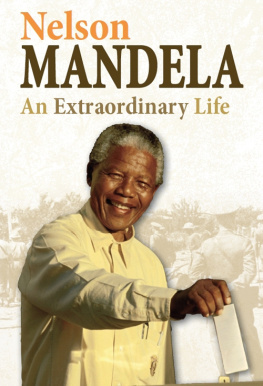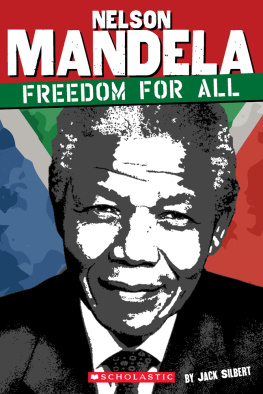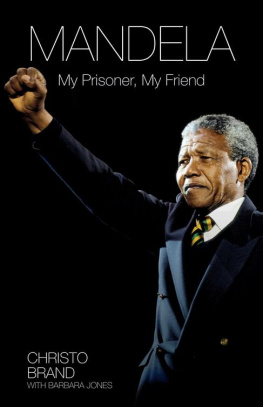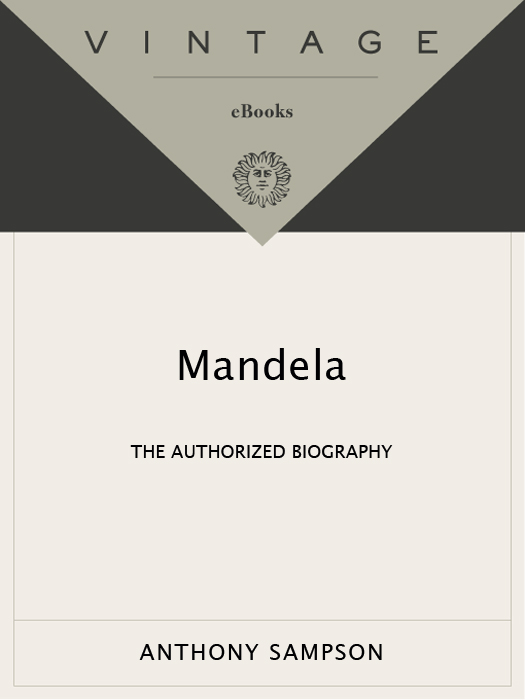International Acclaim for Anthony Sampsons
MANDELA
Written to the best journalistic standards, offering the reader a lively, fluid style with human interest touches that bring Mandela, the icon, to life on the page. The best Mandela biography ever.
The Seattle Times/Post-Intelligencer
Because he knows Mandela and his comrades so well, Sampson brings a depth of knowledge and emotion to retelling their story that makes this work a special addition.
The Washington Post Book World
An insightful and compulsively readable biography. [Mandela] demonstrates beyond any doubt that extraordinary is precisely the kind of man that Nelson Mandela is.
The Philadelphia Inquirer
Scrupulously researched. Mandela has come to represent a nation reborn, and this account of his life is a convincing reminder of that remarkable achievement.
The Daily Telegraph (London)
A provocative, entertaining and extremely important story of triumph.
Daily News
Excellent.
The Christian Science Monitor
Sampson has created a work of astounding breadth, helped immensely by his extraordinary access to vitally relevant sources, from political adversaries to prison warders, family members and colleagues and rivals in the African National Congress and the wider anti-apartheid movement.
Newsday
No leader can bequeath his country everlasting freedom, but Mandela did bequeath an everlasting lesson. Sampsons story is worthy of that bequest.
The Times (London)
Meticulously researched and clearly written.
Houston Chronicle
Anthony Sampson has written a magisterial, detailed and invaluable account of one of this centurys greatest figures.
The Sunday Telegraph (London)
Sampson penetrates the mystique and romance accorded Mandela to reveal the man himself.
The Chicago Reporter
[Mandela] can be treated as definitive.
The Economist
Gives full play to all the symbolic aspects of its subjects life, but, more importantly, it makes heroic efforts to give us the man behind the facade.
The Washington Times
Sampson has produced a lucid, often moving and always readable book.
The Financial Times (London)
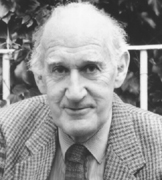 Anthony SampsonMANDELA
Anthony SampsonMANDELAAnthony Sampson is a distinguished British journalist, the author of nearly twenty books, including Anatomy of Britain, The Seven Sisters, and Company Man. His connection with South Africa dates back to the 1950s, when he was editor of the black magazine Drum in Johannesburg and first met Nelson Mandela. He has visited and reported from the country many times since.
ALSO BY ANTHONY SAMPSON
Drum: A Venture into the New Africa
The Treason Cage
Commonsense About Africa
Anatomy of Britain
Macmillan: A Study in Ambiguity
The New Europeans
The New Anatomy of Britain
The Sovereign State
The Seven Sisters
The Arms Bazaar
The Money Lenders
The Changing Anatomy of Britain
Empires of the Sky
Black and Gold
The Midas Touch
The Essential Anatomy of Britain
The Oxford Book of Ages (with Sally Sampson)
Company Man
The Scholar Gypsy
FIRST VINTAGE BOOKS EDITION, SEPTEMBER 2000
Copyright 1999 by Anthony Sampson
All rights reserved under International and Pan-American Copyright Conventions. Published in the United States by Vintage Books, a Division of Random House, Inc. Originlly published in the United Kingdom by HarperCollins Publishers, London, and subsequently published in the United States by Alfred A. Knopf, a division of Random House, Inc., in 1999.
Vintage and colophon are registered trademarks of
Random House.
The Library of Congress has cataloged the Knopf edition as follows:
Sampson, Anthony.
Mandela : the authorized biography / Anthony Sampson.
1st American ed.
p. cm.
Includes bibliographical references (p.).
eISBN: 978-0-307-81402-9
1. Mandela, Nelson, 1918 . 2. PresidentsSouth AfricaBiography. 3. South Africapolitics and government20th century.
I. Title.
DT 1974.S26 1999
968.065092dc21
[B] 99-18498
www.vintagebooks.com
v3.1
Contents
Illustrations
The plain thatched rondavel that was the home of the young Mandela from the age of nine. (Photograph reproduced courtesy of the Mayibuye Centre/Link Picture Library)
Chief Jongintaba Dalindyebo, Mandelas guardian for much of his youth.
The nineteen-year-old Mandela. (Photograph reproduced courtesy of the Mayibuye Centre/Link Picture Library)
In 1944 Mandela was married in Johannesburg to Evelyn Mase. (Photograph reproduced courtesy of the Mayibuye Centre/Link Picture Library)
Mandela in the offices of Mandela & Tambo. (Photograph Jrgen Schadeberg)
Black Johannesburg in the 1950s was bursting with creative energy. (Photograph Jrgen Schadeberg)
Mandela immersed in protests against the apartheid government, with Walter Sisulu, J. B. Marks and Ruth First. (Photograph Jrgen Schadeberg)
In the Defiance Campaign of 1952 Mandela worked alongside both the conservative Dr. Moroka and the communist Dr. Dadoo. (Photograph Jrgen Schadeberg)
Mandela sparred regularly with boxing champions like Jerry Moloi. (Photograph by Bob Gosani for Drum magazine. Baileys African History Archives/Link Picture Library)
The accused in the Treason Trial, which began in 1957.
Mandelas wedding to his second wife, Winnie, in 1958.
Winnie, Mandela and their second daughter, Zindzi, photographed in 1961. (Photograph Alf Kumalo)
Mandela at the Treason Trial in 1958. (Photograph Jrgen Schadeberg)
Mandela burns his pass-book in the turmoil after the Sharpeville massacre in 1960. (Photograph IDAF/Sipa Press/Rex Features)
Mandela meets the exiled Oliver Tambo at a conference in Ethiopia in 1962. (Photograph reproduced courtesy of the Mayibuye Centre/Link Picture Library)
At the military headquarters in Algeria, Mandela and Robert Resha met revolutionary leaders and received advice about guerrilla warfare.
Mandela in London in June 1962. (Photograph by Mary Benson)
The eight men sentenced to life imprisonment at the Rivonia trial in 1964. (Photograph reproduced courtesy of the Mayibuye Centre/Link Picture Library)
Mandelas mother came to Pretoria in 1964 for her sons trial, and watched him being sentenced to life imprisonment. Four years afterward she visited him on Robben Island, and died a few weeks later. (Photograph Alf Kumalo)
Prisoners, including Mandela, in the Robben Island courtyard in 1965. (Photograph Juhan Kuus/Sipa Press/Rex Features)
Mandela and Sisulu on Robben Island. (Photograph reproduced courtesy of the Mayibuye Centre/Link Picture Library)



